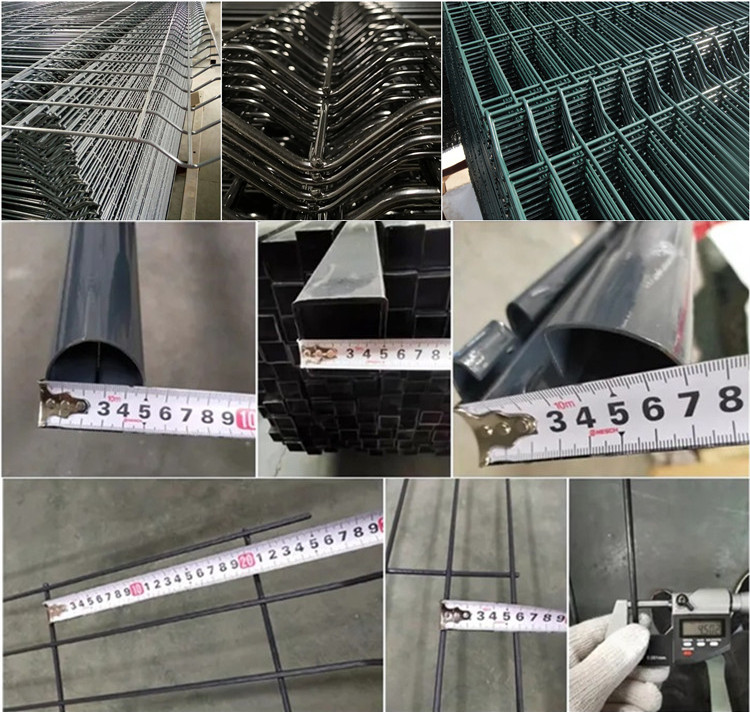Nov . 09, 2024 22:16 Back to list
Temporary Orange Construction Fencing for Safety and Visibility at Job Sites
The Importance of Orange Temporary Construction Fences in Urban Development
In the fast-paced world of urban development, safety and organization are paramount. One of the most visible symbols of construction sites around cities is the orange temporary construction fence. These fences serve not only as physical barriers but also play a crucial role in ensuring safety, securing materials, and maintaining an organized work environment. This article delves into the various aspects of orange temporary construction fences and their significance in construction projects.
Safety First
The primary purpose of any construction fence, especially those that are brightly colored like orange, is to enhance safety. Construction sites can be hazardous places with heavy machinery, hazardous materials, and various potential dangers lurking at every corner. By installing orange temporary construction fences, contractors create a clearly defined boundary that helps prevent unauthorized access. This is particularly important in urban areas where passersby, including children and pets, might inadvertently wander onto a construction site.
The eye-catching orange color is a strategic choice. It stands out against the urban landscape, making it easily visible to pedestrians and motorists. This visibility serves as a warning, alerting individuals to approach with caution and be aware of the ongoing work. Moreover, these fences help delineate safe zones for construction workers, establishing a clear separation between the public and the construction activities.
Securing the Site
Another key function of orange temporary construction fences is the protection of materials and equipment. Construction sites often harbor valuable equipment, tools, and materials that are imperative for the completion of the project. Without proper fencing, these items are vulnerable to theft or vandalism. The sturdy construction of these fences acts as a deterrent to potential intruders, ensuring that investments remain protected.
Additionally, these fences prevent accidental displacement of construction materials. With a defined perimeter, workers can manage the site more effectively, reducing the risk of hazards that could arise from scattered tools or materials. Good organization facilitated by these fences keeps the site running smoothly, minimizing the chances of accidents and delays.
orange temporary construction fence

Compliance with Regulations
Compliance with local regulations and codes is another essential aspect of any construction project. Most municipalities require construction sites to be fenced off, particularly in densely populated urban areas. Orange temporary construction fences help ensure adherence to these regulations. By surrounding the site with these fences, contractors not only meet legal obligations but also demonstrate professionalism and responsibility toward the community.
Furthermore, displaying clear signage on temporary construction fences, often mandated by local codes, informs the public about the nature of the work being done and the estimated timeline for completion. This transparency fosters goodwill between construction companies and the community, paving the way for future projects.
Aesthetic Considerations
In recent years, construction companies have taken into account the visual impact of their sites on the surrounding community. While the standard orange fence is practical, some companies have begun to enhance these structures with banners, artwork, or branding. This approach not only serves the conventional purpose of delineating a construction site but also allows companies to make a positive impression.
Creative designs on temporary construction fences can generate buzz around a project and keep the community engaged. This engagement can be critical, especially when addressing potential concerns about noise, traffic disruptions, and other inconveniences that accompany construction.
Conclusion
Orange temporary construction fences are more than just functional barriers; they play a multifaceted role in urban development. From enhancing safety and securing materials to ensuring regulatory compliance and improving aesthetics, these fences are integral to the construction process. As urban areas continue to evolve, the use of temporary fencing will remain a vital component in creating safe, organized, and community-friendly construction sites. Through their strategic implementation, construction companies can contribute positively to the urban landscape while ensuring the safety and security of their projects.
-
Hop Dipped Galvanized/PVC Coated Temporary Fence - Anping County Xingzhi Metal Wiremesh Products Co., Ltd.|Temporary Fencing Solutions, Durable Security Products
NewsJul.30,2025
-
Hop Dipped Galvanized/PVC Coated Temporary Fence-Anping Xingzhi|Durability&Cost-Effective
NewsJul.30,2025
-
Hop-Dipped Galvanized PVC Fence - Anping Xingzhi | Durable, Quick Deployment
NewsJul.30,2025
-
Hop Dipped Galvanized/PVC Coated Temporary Fence - Anping County Xingzhi|Temporary Fencing, Durable Security, Customization
NewsJul.30,2025
-
Hop Dipped Galvanized PVC Coated Temporary Fences - Anping County Xingzhi|Durable Corrosion Resistance, Quick Installation
NewsJul.30,2025
-
Hop Dipped Galvanized / PVC Coated Temporary Fence - Anping County Xingzhi Metal Wiremesh Products Co., Ltd|Durable Temporary Fencing&Versatile Applications
NewsJul.30,2025



